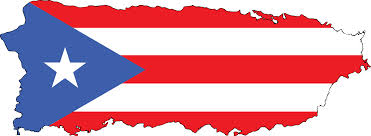 Sinclair is currently hosting the “International Series” which is a collection of three presentations by three professors who have travelled abroad and are bringing back their experiences to share with the Sinclair students. The first presentation was about Mongolia on September 16 presented by Katherine Rowell. On October 21, Yolanda Burgos-Olinger covered the second country, Puerto Rico. There is one presentation remaining on November 18, which will talk about Iceland, presented by Mohsen Khani. Each event lasts from noon to 1:00 p.m. in Building 8 and every speech comes with free food from the topic country. For Puerto Rico, there was plenty of “arroz con pollo” for the attendants, which Burgos-Olinger explains later on in her lecture is simply “rice with chicken.”
Sinclair is currently hosting the “International Series” which is a collection of three presentations by three professors who have travelled abroad and are bringing back their experiences to share with the Sinclair students. The first presentation was about Mongolia on September 16 presented by Katherine Rowell. On October 21, Yolanda Burgos-Olinger covered the second country, Puerto Rico. There is one presentation remaining on November 18, which will talk about Iceland, presented by Mohsen Khani. Each event lasts from noon to 1:00 p.m. in Building 8 and every speech comes with free food from the topic country. For Puerto Rico, there was plenty of “arroz con pollo” for the attendants, which Burgos-Olinger explains later on in her lecture is simply “rice with chicken.”
Professor Yolanda Burgos-Olinger, who teaches Spanish here at Sinclair, opened by talking about a common Puerto Rican greeting, “wepa”. She goes to explain that it is a universal word for “hello” and “yes” and in most contexts it’s used to express excitement and happiness. She grew up in Puerto Rico and moved to the U.S. in 2005 but she goes back frequently to visit her family.
She jumped into a brief history of Puerto Rico, starting with its early colonization by Christopher Columbus in 1493 on November 19. Skipping a few centuries later, in 1898 Puerto Rico was surrendered to the U.S. as part of the Spanish-American War. Because of this, Puerto Rico became United States territory until 1952, when it became a commonwealth. In 1917, the U.S. Congress passed the Jones Act, which gave Puerto Ricans U.S. citizenship. Although Puerto Rico has the option to become a state by gaining statehood, it has not done so due to much controversy on the topic. In the latest vote held in 2012, Puerto Rico showed a 54% lean towards full statehood, but it still has not happened.
Puerto Ricans identify themselves as “boricua” and the old name used for the island of Puerto Rico is “borinquen”. The island itself is 40 miles north to south and 110 miles east to west. It covers 3508 square miles, which is about three times the size of Rhode Island. Around 39% of their youth attend college and their life expectancy is up around 80 years old. She goes on to explain that the population, while still around 3.6 million, has decreased in the past years from around 4 million. Because Puerto Rico is U.S. territory, they use the same currency, the U.S. dollar.
Puerto Rico does not vote for the U.S. president, it has its own governor that the citizens there vote for. The three main political parties are the Democratic Party, the Independent Puerto Rican Party, and the New Progressive Party who focus on gaining statehood and consider themselves the Republicans of Puerto Rico. The main political controversy going on is the debate between staying as a commonwealth and gaining statehood.
Burgos-Olinger went into the music of Puerto Rico and began by explaining that most of their music has Spanish, African and Taino influences. Taino is a term used for the indigenous people that have always lived in Puerto Rico. She spoke about salsa music and how it originated in New York by Puerto Rican and Cuban immigrants, and gave examples of famous musicians who came from Puerto Rico such as Ricky Martin.
One of her main points was that you do not need a passport to travel to Puerto Rico. The temperature stays around 70-80 degrees all year long and the beaches are common vacation spots for people visiting. There are 270 miles of beach, including the famous Flamenco Beach on the island on Culebra, which she says, “is a bucket list item”.
After her presentation, Burgos-Olinger took questions, which covered a wide variety of topics from statehood to Puerto Rico’s national exports, to which she admits she isn’t an expert on, but still gave her best shot at answering. I had a chance to ask her if there is a language barrier for non-Spanish speaking people who go to visit Puerto Rico but she says, “No, there isn’t”. She goes on to explain that even though most Puerto Ricans study Spanish when they are going through their early schooling, most citizens learn English in their later years. She explains, “When I moved to college it was required for me to take English” and that most signs have both English and Spanish on them.
She estimated that a round trip ticket would cost around $1000 now, but highly recommended it as a great getaway for the winter.
Nick Felts
Reporter